The Economics and Statistics Division maintains archives of previous publications for accountability purposes, but makes no updates to keep these documents current with the latest data revisions from Statistics Canada. As a result, information in older documents may not be accurate. Please exercise caution when referring to older documents. For the latest information and historical data, please contact the individual listed to the right.
<--- Return to Archive
For additional information relating to this article, please contact:
August 31, 2017COMPENSATION OF EMPLOYEES Q2 2017 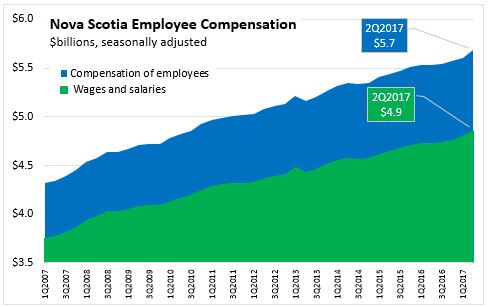
Nova Scotia's seasonally adjusted employee compensation (wages+salaries+employer social contributions) increased 1.3 per cent in the second quarter 2017 to $5.68 billion. Compared to the second quarter of 2016 compensation was up 2.7 per cent.
The wages and salaries portion of employee compensation was up 1.3 per cent to $4.86 billion; an increase of 2.8 per cent over the same quarter 2016. Employers' social contributions increased 1.3 per cent in the quarter and were 2.0 per cent higher than the second quarter 2016.
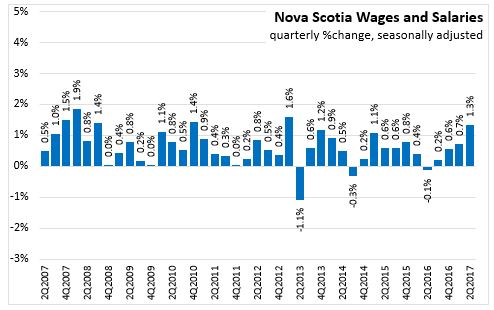
For the quarter, Canada's employee compensation was up 0.8 per cent as compensation increased in all provinces except Newfoundland and Labrador (-0.8 per cent). Nova Scotia (+1.3%) ranked 1st in terms of growth, ahead of Alberta (+1.2%) and British Columbia (+1.1%).
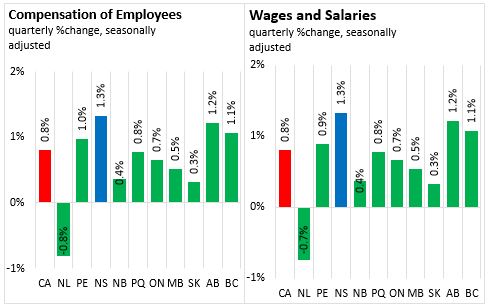
Comparing the first half of 2017 with the first half of 2016, Canada's employee compensation was up 3.3 per cent. Nova Scotia's employee compensation was up 2.0 per cent, faster than three provinces and slower than six provinces. British Columbia with growth of 5.2 per cent had the fastest growth while Alberta at 1.2 per cent was slowest.
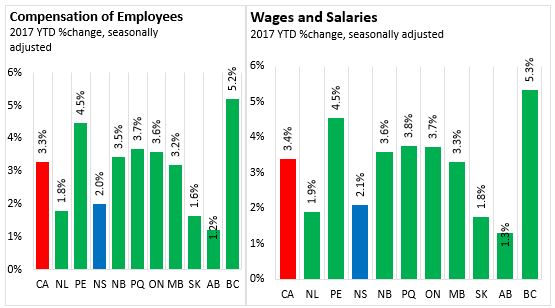
Unadjusted data comparing the first half of 2017 with that of 2016 indicates that total wages and salaries paid in the goods sector rose by 3.8 per cent. Total wages and salaries were up in all goods subsectors led by growth in mining and oil and gas extraction (+18.1%)
Three private service sectors reported rising wages and salaries while two reported a decline. The largest gains were reported in the professional/personal services sector sectors where total wages and salaries rose 4.9 per cent, while the largest loss was in finance/real estate where total wages and salaries fell 1.9 per cent.
Among public and mixed public-private sectors, military saw the largest increase in total wages and salaries at 12.1 per cent due to lump-sum back payments in June 2017. Total wages and salaries were also up in educational services, health care, federal and provincial public administration but fell for local government public administration.
Note: comparison of wages and salaries by sector rely on data that are neither seasonally adjusted nor adjusted to reflect differences in pay periods from one year to the next.
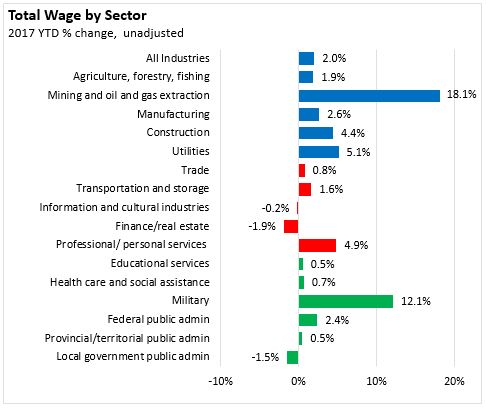
Source: CANSIM table 382-0006
<--- Return to Archive